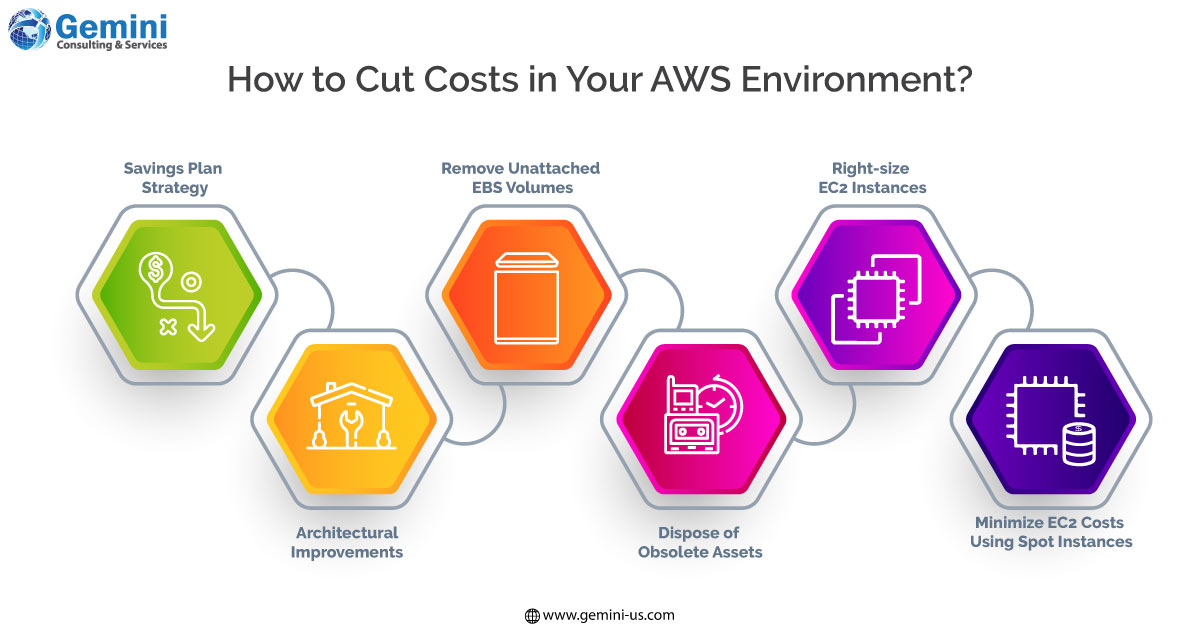Deploying cloud resources is seamless, but costs are intricately tied to usage. Effective governance and vigilant monitoring of user behavior play a pivotal role in managing and optimizing incurred costs. With AWS offering over 200 services based on Elastic Compute Cloud (EC2) resources, the cost of EC2 instances is a critical factor in overall cost management. Optimization strategies often concentrate on diminishing EC2 instance costs, such as transitioning from on-demand pricing to more budget-friendly spot instances or reserved instances. Savings plans are also an option for cost reduction in an Amazon account.
Forbes underscores the significance of cost reduction for enterprises to stay competitive in the contemporary marketplace. While the cloud presents numerous advantages, keeping costs under control is paramount.
Addressing rising cloud costs starts with understanding what the business gains from its expenditure. A substantial bill justified by business growth may not necessarily indicate a problem. Evaluating cloud value is best achieved by examining the unit cost (new users, subscribers, API calls, or page views), a critical metric for any business. The unit cost is calculated as the total cost of AWS services divided by the total number of units in the business. Armed with this fundamental understanding, businesses can explore reducing unit costs with confidence in their potential for growth.
Common Causes of High Costs on AWS
- Underutilized unnecessary compute instances on AWS.
- Unused EBS volumes, snapshots, load balancers, etc., paid for but not utilized.
- Spot instances or reserved instances left unused when applicable instances with potential discounts of 50-90%.
- Unused savings plans, which can save compute costs by committing to a minimum total spend on AWS.
- Suboptimal implementation of auto-scaling features, potentially adding redundant resources to the infrastructure.
- Cost optimization techniques in AWS can trim the entire cloud computing budget without compromising performance and capacity.
 Steps to Grasp AWS Costing
Steps to Grasp AWS Costing - In AWS, pay for what is provisioned, not what is used; thus, smart provisioning is crucial.
- Top AWS cost categories include Compute costs (62%), Storage costs (8%), and Database costs (7%), among others.
- Analyze cost allocation with AWS Cost Explorer, identify top accounts and services contributing to costs, and use hourly and resource-level granularity reports and tags to pinpoint cost-saving areas.
Planning Cloud Migration
A fundamental step in cost reduction involves planning a cloud migration to mitigate unnecessarily high upfront costs. Key considerations include resource allocation, a future-proof data migration plan, emphasis on a migration-architect role, choosing the right level of cloud integration, and undertaking necessary refactoring.
Regular monitoring and check-ups are vital for AWS cost savings. Cost optimization requires expertise, knowledge, and experience. Partner with Gemini Consulting & Services to gain insights into quick cost optimization techniques and receive assistance in creating an efficient roadmap for optimizing your AWS environment. Contact us to explore how our consultants can guide you through this process.

AWS cloud computing services provide a variety of EC2 pricing models, including On-Demand, Spot Instances, Reserved Instances, Savings Plans, Dedicated Hosts, and AWS Free Tier, each with its own limitations. To optimize costs, it’s crucial to understand the services being utilized. Here are steps to consider:
1. AWS Savings Plan Strategy
For businesses with stable resource requirements, committing to Fargate and EC2 is a viable approach. Predicting steady usage over 1 to 3 years allows for effective planning. Adjusting EC2 launch types to match specific business needs, such as network, GPU, and security, and leveraging Fargate for containerized applications can enhance efficiency.
Opting for the All-Upfront payment plan for a 3-year term, with careful consideration of seasonal demands, can result in over 60% discounts in the third year, ensuring payment only for necessary usage.
2. Architectural Improvements
Modern architecture, like multi-cloud computing, allows businesses to optimize costs by leveraging services from various providers, balancing overall cloud spending. Partnering with different cloud vendors, such as Azure or Google Cloud, or considering Hybrid cloud computing, which combines on-premise and cloud infrastructure, can provide flexibility. Monitoring costs associated with existing servers, power supply, cooling systems, and networks aid in minimizing expenses during application porting to the cloud.
3. Remove Unattached EBS Volumes
Launching an EC2 instance creates an attached EBS for local storage. Failing to delete unattached EBS volumes after terminating instances can lead to unnecessary costs. Regularly check the AWS console to delete unattached EBS volumes. Additionally, manage EBS snapshots effectively, as aged snapshots can incur costs.
4. Dispose of Obsolete Assets
Identify and remove failed RDS and EC2 instances’ components along with underutilized Elastic Load Balancers. Unused load balancers can contribute to unexpected AWS costs.
5. Right-size EC2 Instances
Turn off non-production instances when not in use. Monitor resource usage, including memory, CPU, disk I/O, network, disk space, and disk swap utilization. Utilize the AWS Well-Architected framework to make informed decisions about the right instance type and size, balancing cost savings and infrastructure maintenance.
6. Minimize EC2 Costs Using Spot Instances
Leverage Spot Instances to request unused EC2 instances at discounted rates, particularly for specific workloads such as CI/CD, high-performance computing, and containerized workloads. This approach can result in significant savings, up to 90%, for fault-tolerant workloads like big data and web servers.



